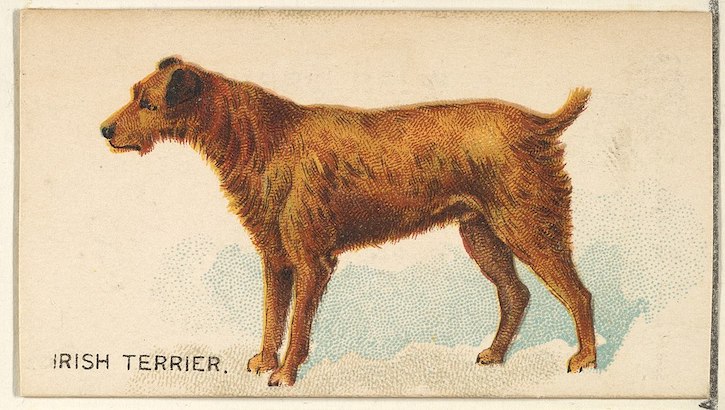
Are you a French Bulldog fancier or historian?
If you are neither, you would be forgiven for not knowing the name, George R. Krehl. The man, a significant figure in the breed in the 19th century, was known in particular for his extensive research into the origins of the breed. Sadly for George, his conjecture proved to be quite wrong. He had theorized that the Frenchie originated in France where it had descended from the Burgos dog and the Dogue de Bordeaux and was “bantamised” into the modern toy bulldog, but his idea wasn’t supported by facts, and was later disproved. The fact is that the foundation of the modern French Bulldog was found in England where breeders had developed a smaller, lighter, toy-size version of the Bulldog. These small Bulldogs, especially popular with lace-making artisans, emigrated with their owners to the North of France after the Industrial Revolution had shut down their shops. In France, breeders continued to develop a distinctly “French” type, and here our story ends for reasons of space. Needless to say we’ve skipped over a lot of detail which you can read here. In this post, we want to touch upon George R. Krehl’s influence in another breed, the Irish Terrier.
Early Irishmen didn’t keep much in the way of records about the dogs they bred, more keen as they were on getting good working dogs, not on building pedigrees. As a result, the Irish Terrier’s origins are not thoroughly documented, and all that anyone knew with any reasonable certainty was that the breed had been in Ireland for a long time. George expanded upon this in 1881 when he contributed to Vero Shaw’s book, The Illustrated Book of the Dog. He wrote, “The Irish Terrier is a true and distinct breed, indigenous to Ireland and no man can trace its origin which is lost in antiquity . . . ”
If anyone doubted him at the time, we don’t know about it. George R. Krehl was a judge, breeder, exhibitor, and considered an expert on the breed. He was the editor of the “Stock-Keeper Journal,” the Vice President of the Irish Terrier Club in England, and instrumental in establishing the Irish Terrier as an original breed, this countering the notion that the “red devil” was a composite dog. Admittedly, consistency was not the breed’s strong point in those days. but by most accounts, George and other breeders made significant progress in a relatively short time to establish consistent breed type. We came across an anecdote that underscores George’s influence. As the story goes, an Irish Terrier named “Stinger” had won a competition, but George thought Stinger lacked correct type and was, “full of Scotch Blood,” an anathema to Irish breeders. George thought a different dog should have won, a Irish owned by George Jamison’s dog, “Sport.”
Shoulder shrug. Dog people (written with a grin).
Still, a commitment to maintaining the distinctiveness of a breed, in this case, the Irish Terrier breed, can inspire passion, and in William Secord’s book, Dog Painting: A history of the dog in art,” George is credited with having made the breed more popular in the 1870s. He even presented Queen Victoria with several Irish Terriers.
Victoria had a fondness for several of the dogs who wore collection boxes on their backs to collect for charity, and her special favorite was ‘Tim’ an Irish Terrier whose “beat” was Paddington Station. Sources say that Tim would bow gracefully to the Queen each time she put a gold sovereign into his collection box.
We start back where we started by suggesting that anyone wanting to learn more about George R. Krehl and the French Bulldog read this.
Image: Irish Terrier from the Dogs of the World series for Old Judge Cigarettes issued by Goodwin & Company. It is part of the Jefferson R. Burdick Collection, Gift of Jefferson R. Burdick and appears here under the Creative Commons CC0 1.0 Universal Public Domain Dedication.
